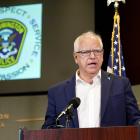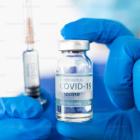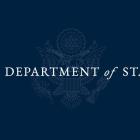A new study from a George Soros-funded group used flawed methodology to claim Facebook failed to prevent more than 10 billion views of so-called “misinformation.”
The study used Facebook’s fact checkers, shown to be inaccurate and biased, to compile a list of “misinformation” posts. It then jumped through some convoluted hoops in order to arrive at an attention-grabbing 10.1 billion preventable views of so-called “misinformation.” The group behind the study wouldn’t even release the lists of posts or pages used in the study because the focus of the study is Facebook’s algorithm. Withholding such information prevents the study from being objectively and thoroughly reviewed, giving the impression of a pseudo-scientific study that wouldn’t stand up to scrutiny.
The study, hyperbolically titled “Facebook: From Election to Insurrection - How Facebook Failed Voters and Nearly Set Democracy Aflame,” came from a far-left group called Avaaz. The group was co-founded by George Soros-funded leftist activist groups Res Publica and MoveOn.org. Avaaz has contributed funds to the Progressive Change Campaign Committee, the Green New Deal Coalition, the National Domestic Workers Alliance and other leftist groups, according to Influence Watch. It also reportedly donated more than $390,000 to co-founder Tom Periello’s failed campaign for Virginia governor, according to the Virginia Public Access Project.
Study Design Uses Flawed Data and Lacks Transparency
For the study, Avaaz first compiled a list of 343 posts that, based on Facebook’s fact checkers, were considered misinformation. According to the study, only “content that was clearly rated ‘false’ or ‘misleading,’ or any rating falling within these categories” was used.
Avaaz did not respond to a request for the full list of specific descriptions at the time of publishing, despite the report’s indication that a list would be provided upon request. The list of 343 posts used in the study has not been made available for review.
Avaaz next identified Facebook pages that shared at least three of the identified misinformation posts during the one year study period, with at least two of them being within 90 days of each other. Pages that deleted or corrected the so-called fact-checked posts were not included in the study.
The pages were then ranked by number of overall interactions (comments, shares or reactions on any posts), and the top 100 engaged pages were used in the study. The top 100 pages shared an average of 8 so-called “misinformation” posts over the one year study period, according to the report.
The list of 100 pages followed for the study was not made available for objective scrutiny, because Avaaz claimed that it wanted to maintain the focus “strictly on the social media platform’s role in not acting earlier to structurally fix its algorithms.” The study indicated that 60 of the 100 pages used in the report “leaned right, 32 leaned left, and eight had no clear political affiliation,” demonstrating a clear bias in the study.
The study used Facebook’s fact checkers to identify misinformation posts. There are many problems with fact-checkers. Facebook’s fact-checkers are all part of the liberal Poynter Institute's International Fact Checking Network (IFCN), which received $1.3 million from liberal billionaires George Soros and Pierre Omidyar. A report from December 2020 also revealed that one of the certifiers working at IFCN was a highly partisan Clinton supporter. USA Today reportedly used college interns to help with its fact-checking.
Recent reports on the Media Research Center’s CensorTrack.org show wildly irrelevant fact checks on some posts. PolitiFact and FactCheck.org “fact-check subjective things like political rhetoric.” The use of fact checks as a basis for the Avaaz study provides it with a shaky foundation.
People Behind Study Are Biased
Avaaz has said on its website that its stated purpose is to “organize citizens of all nations to close the gap between the world we have and the world most people everywhere want.” Despite such assertions, it has supported the Green New Deal, Palestinian statehood, and other highly divisive, radical leftist causes.
Along with the Soros funding behind the co-founding organizations, Influence Watch reported that employees have been previously employed by leftist organizations such as the Ford Foundation, Ashoka, and Amnesty International. Avaaz co-founder Tom Periello is the Executive Director for Soros’s Open Society Foundations. Avaaz co-founder, president and CEO Ricken Patel previously worked for leftist organizations such as The Rockefeller Foundation and Res Publica.
The study claimed to be trying to prevent the spread of “misinformation.” However, the individual campaigns hosted by Avaaz are a case study in misinformation. One “victory” touted on its “highlights” page calls Rupert Murdoch “the world’s most powerful and dangerous media baron, abusing his vast empire to put politicians in his pocket and push a hateful and divisive political agenda.” A campaign to “protect half our planet” declared that “every insect on the planet is on track to be wiped out, causing a collapse of life on Earth -- including us!” [Emphasis theirs.]
The 10.1 Billion Estimated Views Is a Fabricated Number Using Unsound Methodology
The Executive Summary of the study began with an attention-grabbing statement: “Facebook could have prevented 10.1 billion estimated views for top-performing pages that repeatedly shared misinformation.” Facebook spokesperson Andy Stone issued a statement about the report, in which he said:
“Avaaz uses a flawed methodology to make people think that just because a Page shares a piece of fact-checked content, all the content on that Page is problematic.”
Stone’s statement highlighted part of the problem with using the 10.1 billion number. It included everything shared by these 100 pages. The study admitted that the pages shared only an average of eight of the identified misinformation posts over the course of a year. Avaaz’s premise was that Facebook should have throttled all content on those pages because of the average eight posts identified as misinformation.
The methodology used to arrive at such an eye-popping number was questionable. To determine how much engagement could have been prevented had Facebook taken action in March, the authors reported problematic pages to the platform. The study then tracked the percentage reduction in engagement once Facebook took action against some pages in October. Calculating potential reduction in engagement for all pages by using the percentage reduction obtained from the pages that were throttled assumes that the engagement was the same for the throttled pages as for all 100 pages. Such an assumption is unlikely to be true, but cannot be verified without the list of pages used.
Once the number of preventable interactions on all posts was tabulated, Avaaz turned to even more questionable methods to determine the number of preventable post views. Since Facebook does not report the number of views on text or image posts, Avaaz looked at the number of views on video posts for the 100 tracked pages. Comparing the number of video views to the number of video interactions, the study calculated that every video interaction equated to 19.74 video views. The study authors then used the same ratio to calculate the number of preventable post views, helping the study’s authors to arrive at the 10.1 billion number. This method assumed engagement was the same with video posts as with image and text posts. Internet marketers know that such equivocation is likely inaccurate at best. Without controlling for such variables, the data presented is faulty. The study itself was both biased and flawed.
Conservatives are under attack. Contact your representative and demand that Big Tech be held to account to mirror the First Amendment while providing transparency, clarity on “hate speech” and equal footing for conservatives. If you have been censored, contact us at the Media Research Center contact form, and help us hold Big Tech accountable.








